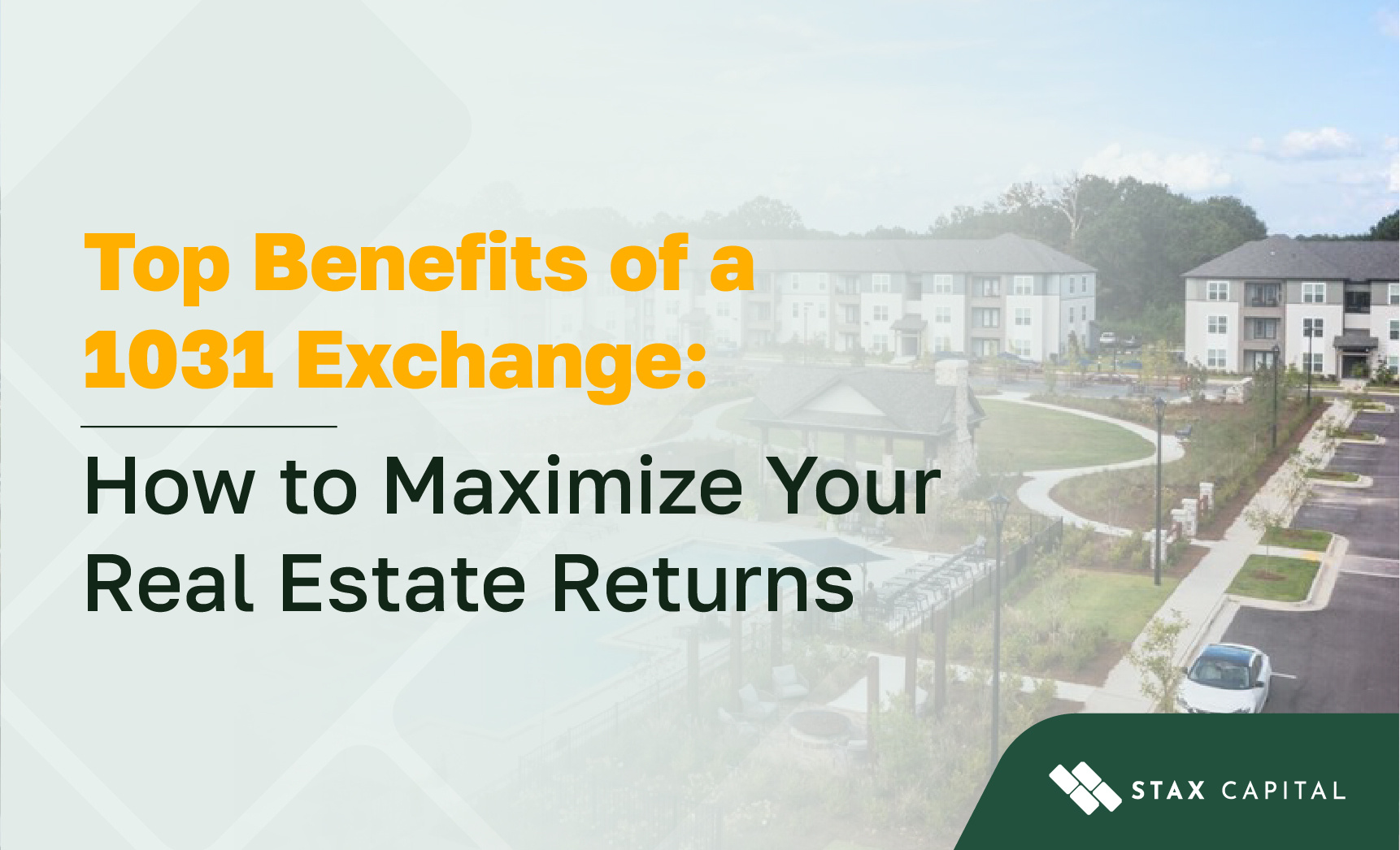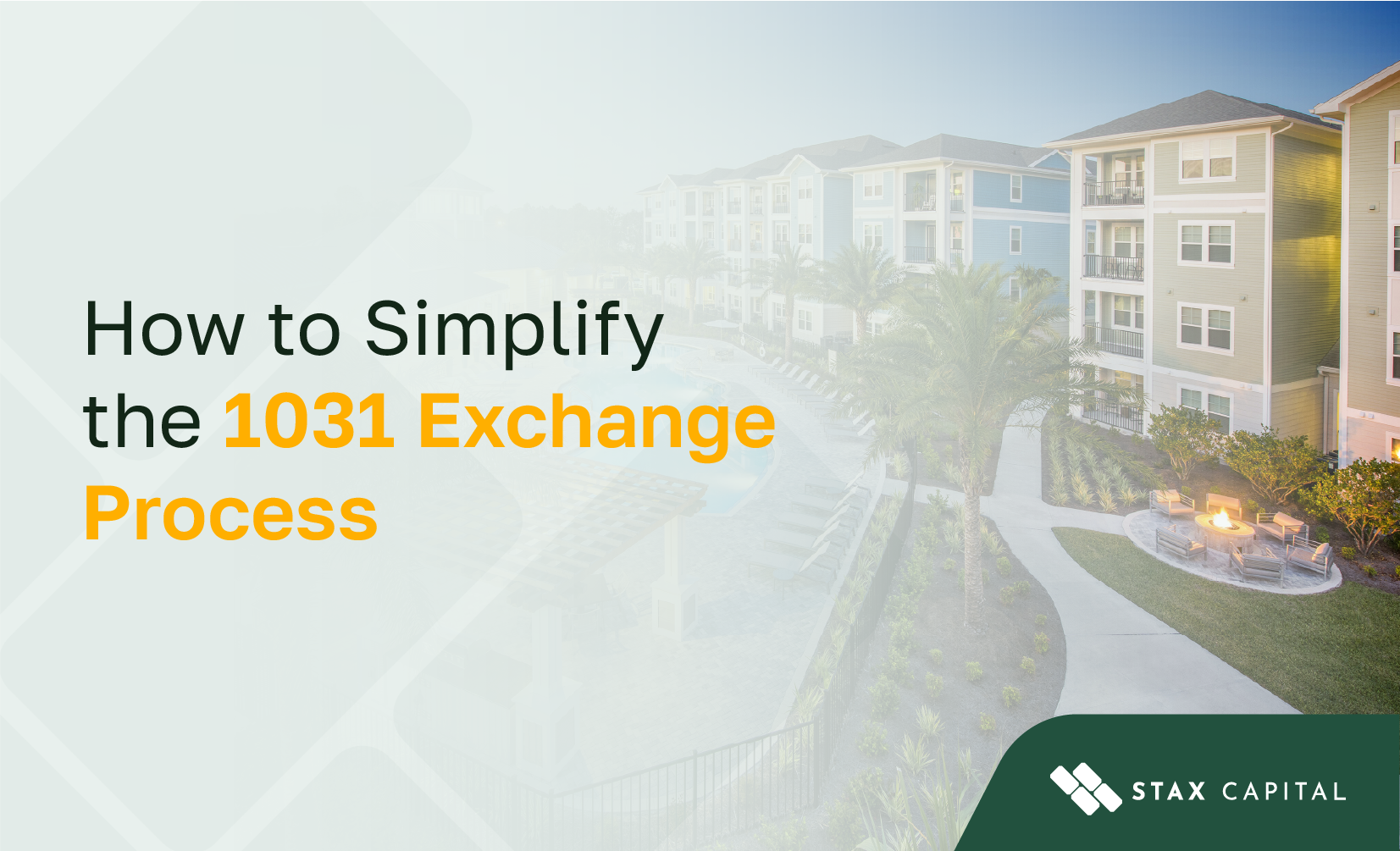Investing in properties using the 1031 Exchange

The 1031 exchange is a term that comes up often in the real estate world of investing. For property investors, the 1031 exchange can be used as an important tool to manage capital gains taxes on property sale.
The process of a 1031 exchange requires professional expertise to execute properly. While it may be considered an advantageous route in property investment, the 1031 exchange does not make capital gains from property sale tax free but rather, tax deferred.
Here’s what you should know about investing in properties using the 1031 exchange.
What is the 1031 Exchange and how does it work?
The 1031 Exchange originated from the Internal Revenue Code (IRC), section 1031, which refers to the exchange of property held for productive use or investment.
Whenever you make a gain from the sale of an investment or business property and reinvest the sale proceeds in a like-kind property, property investment using the 1031 exchange allows you to defer taxes on the capital gain.
However, when you eventually sell the reinvestment property, the deferred capital gain from the disposed property plus any additional gain from the replacement property would be subject to tax. These property investment using 1031 exchange transactions are of a complex nature and thus require the collaboration of various parties such as the investor, who is usually a taxpayer, a facilitator, a tax expert, an investment company, amongst others.
For an investment property sale and purchase transaction to qualify as a 1031 exchange, it has to meet various requirements and follow some laid out rules.
The 1031 Exchange rules
If the possibility of not paying taxes on capital gained from a property sale sounds too good to be true, it is because it comes with a number of rules that have to be adhered to.
Timing rules
One major rule is this: the replacement property, also known as the reinvestment property, has to be identified within 45 days of the sale or transfer of the relinquished property (the property to be sold).
Also, importantly, the replacement property has to be received by the earlier of 180 days after the relinquished property has been sold and transferred or the due date of the investor’s tax return for the taxable year in which the relinquished property is transferred.
Qualified intermediary rules
To qualify as a 1031 exchange, the sale proceeds of the relinquished (disposed) property investment cannot go directly to the owner of the property. The sale proceeds for a 1031 exchange has to go through a qualified intermediary or an exchange facilitator.
Qualified intermediaries are third parties to a 1031 exchange transaction; they usually have no formal relationship with the seller of the investment property or the owner of the new property to be invested in.
The qualified intermediary facilitates the sale by receiving the proceeds from the 1031 exchange and transferring it to the seller of the replacement property (reinvestment property).
Like-kind property rules
As an investor, you have to sell and reinvest in like-kind properties for the 1031 exchange advantages to come into effect. The disposed property and the new property to be acquired have to be like-kind, meaning, the properties have to be alike in terms of nature and character and not necessarily by quality or grade.
Also, the value of the replacement property should be of greater or equal value to that of the relinquished property for the transaction to qualify for tax deferral.
If the value of the replacement property is higher than the value of the disposed property, this may result in a boot. When this occurs, the boot becomes taxable. Proceeds that are not considered to be like-kind property exchange would be subject to tax.
Properties involved in a 1031 exchange have to be located within the United States.
Different types of 1031 like-kind exchanges
1031 exchanges can be carried out using a simultaneous swap, delayed or deferred exchange, a reversed exchange or an improvement property exchange.
Using a simultaneous 1031 exchange, real properties are exchanged simultaneously, with no delays or deferrals.
With the deferred 1031 exchange, the relinquished property which the investor wants to sell is transferred first and the reinvestment property to be acquired is then identified within 45 days after the transfer. The exchange should be completed within the 180-days time limit.
In order to qualify as a 1031 exchange, this type of like-kind exchange needs to be differentiated from a transaction that’s basically just using the sale proceeds of a property sold to buy another property.
The reversed 1031 exchange involves an investor acquiring the replacement property first before selling the relinquished property. This type of exchange would be possible if the investor has cash or a facility to acquire the new investment property.
The replacement property is usually acquired through an exchange accommodation titleholder. This exchange also needs to meet the 180-day rule to qualify as a 1031 exchange.
An improvement property exchange involves using the proceeds from a relinquished property to improve the replacement property of choice. However, the 180-day rule for the sale of the disposed property still applies. Properties exchange also still needs to be of the same fair market value.
For a 1031 exchange, you may need to prove that the transaction is indeed an exchange of property. You have to show that the sale of the relinquished property and the purchase of the replacement property are integrated and mutually dependent on each other.
What are the advantages of real estate investments through a 1031 Exchange?
The major advantage of property investment with 1031 exchange is the ability to defer capital gain taxes on proceeds from real estate property sales.
As an investor, you may be able to carry over any gain from sale proceeds that have been reinvested in a like-kind property for years with no tax implication until you finally decide to sell the newly acquired property.
When you invest in new properties using the 1031 exchange, you may have more purchasing power and more retained cash because there is no immediate cash outflow that would have occurred as a result of taxes on capital gains.
What kind of properties are qualified for a 1031 Exchange?
Only real properties qualify for tax benefits through a 1031 exchange. The property purpose rule is one that has to be met. The exchanged properties in the 1031 exchange should be for trade, investment or business purposes and not for personal uses such as a vacation home or property used as a primary residence or second home.
Properties held primarily for resale do not qualify for 1031 exchanges, this may include properties sold immediately after they are acquired, or properties improved for the sole purpose of resale such as a fixer upper.
Examples of properties that can be leveraged for the 1031 exchange include: retail properties, commercial properties or buildings, rental properties, industrial properties, apartment buildings, etc.
The real properties that qualify as like-kind can either be improved or unimproved.
Delaware Statutory Trusts (DSTs) - A qualified vehicle for 1031 exchange
Corporations and partnerships, trusts, limited liability companies (LLCs) and other entities that pay tax may be able to set up a 1031 like-kind property exchange.
The Delaware Statutory Trusts (DSTs) is a vehicle that can be used to take advantage of any tax deferral that may result due to reinvestment in like-kind property. In other words, DSTs qualify as 1031 like-kind property exchanges.
To identify DSTs to reinvest in through the 1031 exchange within 45 days after the sale of the relinquished property, you can use the three-property rule, the 200 percent rule and the 95 percent rule.
Using the three-property rule, you can identify up to three prospective replacement properties irrespective of their fair market value.
With the 200 percent rule, you can identify any number of prospective replacement properties given that the total market value of these properties does not exceed 200 percent of the fair market value of the disposed property by the transfer date.
A 1031 exchange may still be in effect if the accredited investor identifies unlimited prospective replacement properties as long as 95 percent of the total value of all identified properties is purchased.
While DSTs may possess liquidity risk, they may provide a faster route for you to identify and close on property investments that qualify as 1031 exchange under the 45-days and 180-days like-kind property exchange requirements.
Invest in DSTs that qualify as 1031 Exchanges with Stax Capital
For over 12 years, Stax Capital has offered real estate investments that qualify as 1031 like-kind exchanges. With investment properties under Stax Capital DSTs, you gain access to top-notch management that relieves you of the complexities and time-consuming nature of managing investment properties.
If you need to diversify your investment portfolio through the real estate market, the highly experienced team at Stax would work with you to provide solutions and opportunities that may potentially expand your portfolio and help towards your wealth generation goals and objectives.
For when you need to invest in a property that qualifies as a 1031-like-kind exchange but want to stay away from the hassles of property management with the potential to earn passive income, Stax Capital is just a reach away.
Delaware Statutory Trust vehicles are only available to accredited investors. Property investments using the Delaware Statutory Trust vehicle as a 1031 exchange can be a complex process. Therefore, it is advisable to get professional advice from tax and investment advisors.



Share: